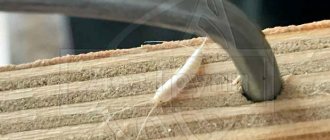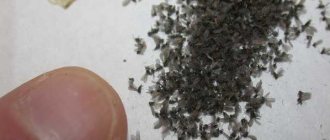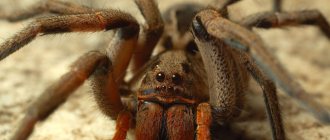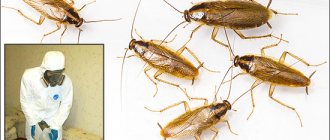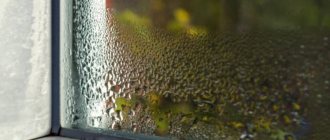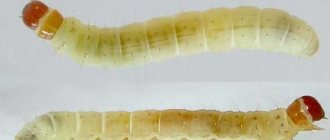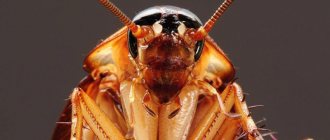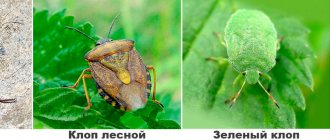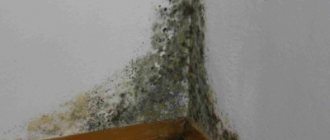Despite their microscopic size, these insects can cause irreparable damage, especially if you like to stock up on cereals. And what’s most annoying is that you can only notice them when the pests are already multiplying. If you have weevils in your apartment, how to get rid of them needs to be decided urgently. Otherwise, soon there will be no food left to cook dinner or breakfast.
What do weevils look like?
Barn weevil Weevils
(another name for them is elephant weevils) belong to the family of beetles. The pests are very small, their length is 2-5 mm. Often rice and barn varieties appear in the house. The second most common. Young weevils have a light brown tint, while adults have a black color. The beetle has a cylindrical body and an oblong head with a tube. The barn elephant has poorly developed wings, so it is not adapted to fly. This disadvantage is compensated by well-developed legs, allowing the bug to move long distances. The head has a strong oral apparatus, so it easily gnaws through grains and other hard cereals.
Why do they appear in the apartment and why are they dangerous?
The weevil appears in the home with packaged cereals and grains, which are purchased in the retail chain. If the humidity and temperature conditions in the barn storage facilities were not maintained, and measures were not taken to remove the pest, the grain will be contaminated. It is not immediately possible to notice an insect in purchased products - the egg is neatly sealed with mucus, the larvae resemble sticky semolina. The kitchen attracts weevils with its warmth and abundance of food, so pest control will not be easy.
What is the danger of grain infection by weevil:
- rapid deterioration of food supplies - damaged grain loses nutritional value and is unsuitable for consumption;
- beetles are carriers of bacteria and infections;
- If you eat a damaged product, allergic reactions and food poisoning are possible.
Adult weevils have sharp teeth and easily damage grain and plastic bags.
Barn weevil in the house
It will be much easier to remove weevils from the kitchen if you know how they reproduce. The female lays one egg in the grain, having previously made a hole in it. The fertility of one female individual leaves 200-250 embryos. Having completed oviposition, the female closes the depression in the grain with mucus, which quickly hardens.
After pupation and hardening of the cover, the young beetle independently gnaws a hole in the grain shell and leaves it.
Reasons for the appearance of weevils in an apartment
A common way for weevils to enter an apartment is through spoiled food purchased by a person in a store or market. Basically, infection of cereals occurs in the barn, in a warehouse, where the necessary preventive measures to suppress pests are not carried out.
Packaged products containing eggs of this beetle are favorably sold in retail. Moreover, it is very difficult to see the weevil in the bag; they hatch after they have brought the cereal home. It will be possible to notice the insect only after the mature individuals have matured.
When the food supply runs out, the pests chew through the package and go in search of a new product. Infected products are prohibited from being eaten, since they contain waste products of beetles that are dangerous for food poisoning. But in the vegetable garden or garden plots, “uninvited guests” may appear from neighboring estates. Most of these insects fly well, so it will not be difficult to settle on other patches of land.
Who will you have to fight with: photos and descriptions of weevils
This insect, known since the times of Ancient Egypt, belongs to the order Coleoptera beetles, and is a very serious pest that destroys vegetable and fruit crops, as well as various types of grain.
Weevil is a dangerous pest
Currently, about 50 thousand varieties of weevils are known, among which only a few can become uninvited guests of your home and garden. These include:
- The granary weevil prefers to live in the kitchen and is the most voracious of all species. The favorite delicacies of this insect are cereals and flour products.
- The rice weevil is also a frequent visitor to our homes. He is unpretentious in nutrition, loves baked goods and cereals.
- Walnut weevil - this type of insect prefers to live in places where hazel and walnut are stored.
- Oak weevil - the favorite food of this type of bug is acorns, however, in homes it does not disdain any other food products.
- The beet weevil prefers to settle in gardens and vegetable gardens, eating vegetable crops.
Despite the presence of wings, some types of weevils cannot fly at all, while others, on the contrary, use this skill perfectly. These insects also reproduce at tremendous speed. So, for example, a female granary weevil is capable of laying a clutch of 300 eggs. It is for this reason that the appearance of these bugs in your home requires their prompt destruction. Otherwise, they will ruin all your cereal stocks in a very short period of time.
The weevil is capable of destroying household stocks of cereals, flour and pasta
Where do weevils come from in apartments and why should they be removed?
One of the ways weevils get into the house is through the products we bring from markets and stores. Typically, infection of cereals with this type of parasite occurs in warehouses and barns, the owners of which do not take preventive measures to destroy pests. Packaged products containing weevil eggs are successfully sold in retail chains. At the same time, you will not notice insects in the bags that will hatch in your apartment after purchasing the cereal. And the first traces of grain damage will be noticeable only after the development of sexually mature individuals.
Weevil larva and stages of its development
However, the danger of these insects to humans does not lie only in the possibility of food spoilage. Weevils carry spores of fungal infections that are very dangerous to humans, as well as many pathogenic bacteria. Their droppings can cause severe allergic reactions, leading to serious deterioration in health. It is for this reason that when pests are first detected in your apartment, it is recommended to urgently take measures to destroy them, preventing the possibility of reproduction and spread of diseases.
Damage caused by weevils
The danger of the beetle to humans lies not only in the spoilage of products. Pests contain spores of pathogenic bacteria and fungal infections.
Weevil droppings provoke severe allergic reactions, causing a noticeable deterioration in health. Therefore, when they are identified, you should immediately get rid of them and take appropriate measures to destroy them, preventing reproduction and the formation of possible pathologies.
Elephants are polyphagous insects that easily endure natural disasters, moving into residential apartments. Pests destroy bulk products, resulting in dust unsuitable for use.
A chitinous skin remains in the beetle flour, separating carcinogens. Bakery products made from this flour lead to infection and disruption of the gastrointestinal tract.
Cost of weevil control
| Type of service | Price |
| Fighting weevil | from 1,500 rubles |
As mentioned above, it is impossible to achieve 100% results on your own. If you want to order sanitary treatment of the premises and remove the weevil, feel free to contact our company - Sanitary Service Garant. Working without intermediaries is our style. The cost of weevil destruction is optimal for our clients. Regular customers get good discounts.
You can contact us in a way convenient for you - via email, telephone, fax. Detailed information about the company is listed on the website. We use harmless and safe drugs that will not affect your health. We follow safety precautions and do not make mistakes.
Ways to get rid of weevils
The weevil has rather sharp, strong teeth, which can easily make a hole in the material where loose products are located. There are several effective ways to eliminate insects.
Remedies for weevils
Chemicals are used only when there are significant reserves of grain crops. It is not advisable to use them at home, as you can harm yourself. Plants must be treated with drugs. When weevils are found in barns, heat treatment is carried out.
Insecticides that suppress beetles and larvae are used for spraying. These products are toxic; you should carefully read the instructions before using them. Chemical preparations in the fight against the unpleasant weevil of grain crops are provided for fumigation.
Insecticides for weevils
- Nemabact is completely safe for animals and people. Destroys different types of beetles.
- Antonem-F is an environmentally friendly composition produced from entomopathogenic nematodes and belongs to hazard class IV.
- Karbofos is an acaricide, an insecticide intended for removing different types of beetles, belonging to hazard class III.
- Inta-Vir is an excellent insecticide that helps fight any insects that have settled on indoor plants. The active ingredient is cypermethrin and should not be used near an aquarium in an apartment.
- Fufanon belongs to hazard class III, do not treat near aquatic life. Before removing the terrible weevils from the kitchen, you need to shake the tablets in a certain amount of water (see instructions). Processing plants should be done with gloves.
Fumigants for weevils
The most effective tablets for killing weevils are:
- Phosphine is an effective fumigant based on aluminum phosphide.
- Dakfosal is an insecticide designed for the purpose of disinsection of seed or food grain stocks. Has increased fumigation activity. Helps to remove insect reserves even in the most difficult to reach places. In addition, it does not affect the quality of the product.
- Alphos - indicated for fumigation of barns where grain is located, repels harmful insects. Effective in the fight against ticks, weevils, hamsters and other rodents.
- Gin fumigant - used in any premises. The product disinfects feed and food grains in bags or in bulk. The tablet contains a gas that damages the metabolic processes and respiratory tract in the weevil's body, causing its death.
- Magtoxin - exhibits high insecticidal activity and is immediately absorbed through packaging bags and goods. The drug kills adult insects, as well as larvae, pupae and eggs of beetles.
Features of weevils
These pests are representatives of the beetle family, of which there are more than 50 thousand species. In apartments, as a rule, barn weevils are found, the body length of which is about 4 mm, and they are distinguished by a dark brown color. The insect cannot fly because it has underdeveloped wings. The female lays eggs in grain, with one grain provided for each egg. To lay an egg, the female gnaws a hole in the grain. After that, she clogs the grain with a special substance. The female is capable of laying up to 300 eggs, and after a week or a week and a half, larvae appear, which feed all the time on the grain while inside. After this, the larvae turn into pupae and, after some time, an adult beetle emerges from the grain.
Granary weevils parasitize wheat, barley, rice, flour and pasta. Weevils love warmth, so at a temperature of +5 degrees they go into suspended animation. At temperatures below - 5 degrees, both beetles and larvae die. If conditions allow, the female can lay eggs up to 3 times in a year.
Weevils can appear in a person’s home due to food purchased either in stores or at the market. Bulk products become contaminated in storage areas where sanitary conditions are not met, as well as in packaging areas.
Freezing cereals and flour in the kitchen
You should review all the bags of cereal that are available. Even if very few weevils are found, you still need to get rid of them by throwing them in the trash. After all, beetles lay such small eggs that you can hardly see them. In addition, it is necessary to sort through packages containing wheat elements.
To freeze, you will need the following steps:
- It is important to disinfect and treat every cabinet where cereals are stored with a chemical. For maximum effectiveness, the procedure must be repeated a couple of times.
- Place packages where no insects were observed into plastic cellophane bags and tie them.
- Place uninfected bulk products in the freezer for several days to destroy any remaining eggs.
- Then you should review the grains again and pour them into jars with tight-fitting lids. You can place bay leaves or nutmeg in clean, washed cabinets.
Weevils in cereals
Infected cereals
Treatment at elevated temperatures When insects were found in small quantities in the flour, you need to sift it through a sieve. Then place the product on a baking sheet and put it in the oven, dry it and fry it for an hour at 120°C. However, it is also dangerous to abuse it. Because if there is excessive contamination, the use of such flour will cause poisoning of the body.
All cabinet surfaces must be disinfected with pyrethrum:
- this powder can be purchased at a pharmacy;
- the product has a strong toxic effect that kills pests, it does not affect people at all, since it contains Caucasian and Persian chamomile;
- In order to eliminate weevils and preventive measures, the powder is used once every 14 days.
To get rid of larvae and eggs, you can also use a microwave oven to process cereals at high temperatures. Infected products must be placed in a small layer on a flat plate and left for 2-3 minutes. into the oven. At the end of the procedure, rinse the cereal and dry it thoroughly; this is necessary for further storage of grain products.
How to get rid of it: effective methods
The beetle is distinguished by the presence of strong and sharp teeth, so it easily gnaws through the packaging material where bulk food products are stored. To get rid of this pest, you can use one of the following methods.
How to deal with weevils in an apartment
Product Check
If bugs are found in any cereal, you will have to check all cereals and all bulk food products. If traces of weevil are found everywhere or in individual cereals, then these products will have to be thrown away. It is permissible to sift the flour to separate the insects.
Freezing
Since the weevil beetle cannot withstand low temperatures, cereals or flour can be frozen. To do this, after purchasing cereals or flour, you can place them in the freezer and keep them there for about 4 days. During this period, the larvae and eggs will die. After this time, the products can be stored as usual.
Treatment at elevated temperatures
The weevil beetle cannot withstand high temperatures either. Cereals can be placed in the oven at a temperature of 50-60 degrees for 20 minutes, no more, as the products may lose their nutritional properties.
Preventative cleaning
Places where bulk food products are stored require treatment with soap or soda solution. After treatment, it is better to additionally wipe all shelves and cabinets with a vinegar solution. After this, the surfaces must dry well and only then can bulk food products be stored again.
Repellent method
Many insects, including weevils, cannot tolerate bright, persistent odors. To repel pests, you can use peeled garlic cloves, which are placed in containers in which food is stored. Garlic can be replaced with cloves. In addition to them, you can use tansy, wormwood, lavender, and bay leaf. They are also placed in containers with food. All of these plants can be replaced with essential oils. To repel pests, just take cotton pads and soak them in essential oils, then place them on problem areas. They need to be changed about once a month.
Where bulk food products are stored, it is permissible to place small bags of washing powder.
On a note! You need to be careful with the powder so that it does not accidentally get on food.
How to protect indoor plants
Weevils can also harm indoor plants. They lay eggs in the buds. The most vulnerable are hydrangeas, cyclamens, roses, etc. In this regard, these plants require protection.
An adult beetle is capable of destroying up to 14 g of domestic flowers, which is much more than its own weight. Flowers, buds, shoots, etc. are used.
To combat weevils, use:
- Fufanon.
- Inta-Vir.
Before using chemicals, you need to get rid of the affected parts of the plants. After this, you can treat the remaining healthy flowers, leaves and shoots with these solutions.
To combat these pests, you can prepare a solution based on mustard. Take 100 g of mustard powder and mix it in 3 liters of water. Plus, the plant needs to be transplanted into fresh, non-contaminated soil.
Independent destruction of weevils in the apartment
Repels pests with bright and persistent odors
Most pests, including weevils, do not tolerate strong, persistent odors. In order to repel unpleasant insects, you can use peeled garlic; it is placed in the container where the food is located. Instead of garlic, you can also use cloves. Lavender, tansy, and wormwood have a repellent effect. They are also installed in cabinets with cereals. Such plants are often replaced with different essential oils.
To scare away the weevil, you will need a cotton pad, which is dipped in the product and then placed in the desired problem area. It is allowed to put washing powder pre-packaged in small bags in boxes with grain products. However, with this method of scaring you should be careful and not allow it to get on the cereal.
Strong odors repel weevils
Methods for controlling weevils in indoor plants
Methods for controlling these pests can be divided into two main groups:
- mechanical;
- chemical.
Mechanical methods are the most harmless for the flower and the inhabitants of the room, because no chemicals are used, but this method is not the most effective. Chemical ones are much more effective, especially since they are not so harmful
There are also folk remedies that you should also pay attention to, because they are effective.
If the mechanical method is chosen, you need to place the plant in a well-lit place and carefully examine it. You will need to look for bugs and collect them manually. Also, if there are damaged buds affected by larvae, they will also need to be picked and thrown away. You need to throw away the collected bugs carefully, placing them in a sealed bag or jar, tightly closing the lid so that they cannot get back out.
Preventative cleaning of the apartment
The room in which bulk products are located needs to be disinfected. Treatment is carried out with soda or soap solution. After which it is recommended to wipe the cabinets with vinegar diluted with water. The shelves must dry well, and only then are you allowed to stack grain products again.
Prevention against weevils
To prevent “uninvited guests” from appearing in your kitchen, you should properly store bulk products, which become a source of pest reproduction.
Preventive measures:
- for timely detection of weevils in the apartment, it is necessary to carry out regular inspections of cereals, as well as pasta, spices, teas, dried fruits;
- flour is sifted through fine calico;
- good conditions for the safety of grain products will be premises that do not exceed 10°C and have a low degree of humidity;
- cereals and other fillings should be placed in sealed containers; Eco-bags should not be used here, since they will become an obstacle for large and resourceful beetles;
- do not contain grain in paper bags, you must choose food-grade plastic, glass containers, stainless steel;
- if weevils or traces of their vital activity are detected in products, it is prohibited to eat these products;
- Place nutmeg or a bag of salt in the container where the cereal is.
To prevent weevils from appearing in your apartment, it is necessary to check the manufacturing date before purchasing the product, and also take a good look at the product for the presence of traces of the beetle. To prevent pests from entering your summer cottage, it is important to dig up the soil and spray the plants with chemicals.
And in case of infection, immediately begin to remove them; for this you can buy special chemicals or use home folk methods.
Methods for getting rid of black bugs in the kitchen
If you find bugs in the kitchen, take the necessary measures to destroy them:
- Identify and correct the source of the problem. Empty the cabinets and review all supplies of cereals, flour, dried fruits, tablets, tea and coffee. Place spoiled food in a bag and place it in the trash.
- Inspect the kitchen furniture, window sill and household appliances - sometimes uninvited guests are found in such unusual places.
- Wash food storage containers with soda solution.
- Wipe the doors and shelves of cabinets in the kitchen with a cloth soaked in a solution of vinegar (1 tablespoon per 1 liter of water) or detergent.
- Seal or seal any cracks that are discovered during cleaning.
- Pack the remaining intact cereals in an airtight glass container and take them outside the kitchen for 10-14 days. If no insects appear in them during this time, they can be eaten.
A prerequisite for getting rid of bugs in cereals is to thoroughly treat cabinets, shelves and other surfaces in the kitchen with a vinegar solution. This disinfection is safe for humans, but effectively repels pests.
Products that could be contaminated with parasites are subject to special treatment. The following methods are used for this purpose:
- exposure to ultraviolet radiation;
- exposure at high temperatures in the oven (10 minutes at a temperature of +100…120 ℃);
- exposure to low temperatures during the day (in the freezer).
Folk ways to fight bugs
To combat bugs in the kitchen, products with a bright aroma are used. Pests are repelled by the smell of bay leaves, lavender, garlic, wormwood, borax, vinegar and nutmeg. To get rid of pests, place any of them on the shelves of the closet and do not forget to change them periodically.
Traps that you can make at home will help you get rid of pests:
- Combine borax and powdered sugar in equal proportions.
- Pour the mixture into the lid and place the trap near the pest habitat.
- Check the bait regularly and refill it if necessary.
Bay leaf is an affordable, safe and effective means of repelling insects from cereals, tea, dried fruits and other food products.
Who is the “weevil” beetle and how to fight it
The weevil beetle boasts a very ancient history, because the first mentions of it were found in Ancient Egypt. Even then, he penetrated the pharaohs' vaults and destroyed supplies. Despite the fact that it mainly prefers tropical climates, some of its species thrive in more severe conditions. Over the centuries, it has not lost its activity and in our time often appears as a place where various products are stored. Therefore, it is important to know how to deal with it and how to prevent its occurrence.
Tips and tricks
To prevent weevils from settling in your apartment, you need to adhere to the basic rules for storing food. So, in the cabinets where cereals, flour and pasta are stored, there should always be perfect cleanliness. We need to stop using paper and plastic bags. The best option would be plastic, tin or glass containers with a tight-fitting lid. They are specially designed for storing food.
Before pouring the cereal into a container, it must first be washed using a detergent or simply wiped with a towel soaked in a weak solution of vinegar. After this, dry the container well. The optimal level of humidity in a container for storing flour or cereals can be maintained by placing a natural fabric bag filled with salt on its bottom. Stocks of cereals in the house should not be too large. You need to purchase products on the basis that they will last for 2-3 months.
When purchasing flour or cereals, you need to pay attention to when they were produced and packaged. To prevent the possibility of insects forming in flour, certain preventive measures must be taken. If possible, you should store cereals and pasta in the refrigerator so that the temperature is no higher than 10 degrees.
Protecting indoor plants
Speaking about the omnivorous nature of the pest, we also mean the harm caused to indoor plants. In the early flowering phase, elephants gnaw a hole in a flower bud to lay an egg inside it, and only then weaken the peduncle. Diseases of houseplants are caused by parasitic insects when flowerpots and pots are taken out onto the terrace, balcony or garden in the summer.
The weevil is very voracious
Attention! The gluttony of the weevil is evidenced by the fact that a mature insect eats about 14 g of green shoots, petals, and buds to maintain vitality. This amount is 100 times more than the weevil's own weight.
Most often, weevil control is carried out on roses, cyclamens, and hydrangeas by watering the soil in pots with Inta-Vir and Fufan. Pre-infected flowers are removed from healthy crops. Wipe the leaves with the same solutions prepared according to the instructions.
Using non-chemical methods, it is recommended to prepare a mustard solution for spraying: dilute 100 g of mustard powder in a three-liter jar of water. If possible, it is better, however, to transplant the plants into a clean pot with uncontaminated soil.
Compliance with preventive measures and tried and tested control methods will help protect your home from weevils.
Check out articles on similar topics
- Where do woodlice come from and what do they eat?
- Carpet beetle and the fight against it
- How to get rid of double-east in a private house
- How to deal with woodlice in an apartment and how to poison the insect
Comments
leave a comment
What is the danger of elephants
Rice elephant
In addition to the fact that they spoil food, turning it into dust, they can cause allergic reactions and accompany the disease allergic alveolitis. Leaving microparticles of their chitinous shell in the flour, carcinogenic secretions that pass into the finished product after baking contribute to the occurrence of infections and disruptions in the gastrointestinal tract. Pathogenic fungi and bacteria are introduced into products. At the same time, they travel from one grain to another or to flour.
We suggest you read: Where do red house ants come from in an apartment?
How to get rid of weevils on your property
Weevil on strawberry
The strawberry weevil is a gray-black long-proboscis bug up to 3 mm in size. In the spring, individuals mate in flower buds, in which the larvae then develop. How to deal with weevils on strawberries? Today, there are many ways to destroy the pest, which can save up to 40% of the crop even with total damage. The sooner you start your fight against the beetle, the more chances you have to emerge victorious.
- Wireworm in the garden: how to get rid of it, how to fight it, how to treat it
In the spring, when the air temperature is uncomfortable for the pest, treat the area with strawberries with the following means:
- iodine solution - dilute a teaspoon of iodine in a bucket of water;
- dissolve 3 Intra-vir weevil tablets in 10 liters of water.
Carry out the first treatment 5-6 days before the start of flowering, the next time spraying is carried out in mid-summer. Biological preparations Antonem-F and Namabact can be used to process strawberries or garden strawberries. Until the end of spring, it is permissible to use the drugs Fitoverm, Iskra-bio and Akarin. It is advisable not to resort to stronger means, for example, insecticides such as Karbofos, Actellik and Metaphos.
Cherry weevil
The cherry weevil, also known as the cherry trumpet weevil, also known as the cherry weevil, affects not only cherry trees, but also cherry, plum, apricot, cherry plum and even hawthorn trees. This is a golden-green bug, 5.5 to 10 mm long, with a purple metallic tint. The larvae are white, dotted with sparse red hairs, with a brown head and brown mouthparts.
Weevils cause damage to the generative organs of stone fruit crops even before sap flow begins - tree buds dry out and crumble. An invasion of the cherry borer can lead not only to loss of fruit yield, but due to the death of leaves, the trees themselves may also perish.
The fight against the cherry weevil should be carried out by all possible means - preventive, agrotechnical, folk, biological, and if necessary, then chemical:
- in the fall, clean the tree trunks of old exfoliated bark, then burn the plant remains and clean the trunks with a solution of lime;
- Also remove fallen leaves from under the trees into a compost heap or burn them;
- Be sure to dig up the soil in the tree trunks;
- during the period of swelling of the buds, shake off the beetles onto white paper or cloth spread under the tree and destroy them;
- during fruit ripening, collect and destroy carrion so that the larvae do not go into the soil;
- immediately after flowering, if you find more than 8 beetles on the tree, treat it with any of the chemicals we described.
Plum weevil
This bronze-colored bug with a metallic sheen, up to 45 mm long, all covered with short thick hairs, is also called the copper pipe worm due to its appearance. Not only plums suffer from it, but also thorns, apricots, cherries, sweet cherries, and sometimes apple trees, hawthorns, rowan berries and even currants. Harm is caused both by adult insects, which consistently damage buds, buds, flowers, pedicels, young fruits and leaves, and by larvae that develop in fruits.
The fight against copper pipeweevil is carried out in the same ways as against the cherry weevil, and among the chemical preparations, pyrethroids and organophosphorus compounds are most effective against it - for example, Actellik, Fufanon or Bazudin.
Raspberry weevil
Raspberries are damaged by the same type of weevil as garden strawberries, and the main damage is caused to the plant by the female weevil, which can damage up to 30 buds in one season, laying eggs in them, from which larvae appear after 6-7 days, devouring the flowers from the inside within three weeks You can prevent weevils from appearing on raspberries by following the preventive protective measures that we have already described to you, but if preventive measures do not produce results, proceed to treating raspberries with folk remedies.
How to poison a weevil if the number of its individuals on raspberries threatens to destroy the crop? During the period of bud protrusion, treating the bushes with Taran will be justified. Before flowering and after harvesting, it is better to spray raspberries with insecticides Fufanon Expert, Karbofos, Iskra-M or Novaktion. Throughout the growing season, Alatar copes well with weevils on raspberries. Before using toxic drugs, carefully read the instructions and do not neglect safety precautions.
Nut weevil
The nut weevil, or nut weevil, is a brown bug 7-10 mm long. At the end of April, its females lay eggs in unripe hazelnuts, and the larvae, while developing, feed on their pulp, as a result of which half the harvest can be lost. Favorable conditions for the appearance of weevils on nuts are high humidity with an average daily temperature of about 19 ºC.
As a preventive measure, you can consider digging up the soil in the tree trunk to the depth of a spade bayonet, collecting fallen and wormy nuts, and you can destroy weevils on the nut before oviposition by treating the plants along the ovaries with a two percent solution of Fufanon or Actellik.
Pine weevils
The large pine weevil, or ancient spruce weevil, is a dark brown beetle 7-14 mm long. They damage three to six year old pines and spruce trees exclusively by mature individuals, eating their bark down to the sapwood. The wounds from these gnaws merge, becoming covered with resinous juice, as a result of which the entire trunk becomes tarred, and the tree dies. The pine weevil is also dangerous because it also damages deciduous trees - oak, alder, birch and others, if they are located near a pine or spruce forest.
Two more types of weevils damage coniferous trees - pine and blue pine. The pine weevil, also known as the pine weevil, is a dangerous pest of coniferous forests that damages the bark of trees, which can cause the plants to die. This is a brown beetle with yellow dots forming two longitudinal stripes on the body. The blue pine weevil is a beetle with a bluish tint that eats holes in young coniferous shoots and lays eggs in them. The larvae of the blue pine weevil eat into the wood, make tunnels there and pupate. Coniferous trees suffer from both adult blue weevils and its larvae.
Natural enemies of all types of pine weevils include rooks, crows, starlings, woodpeckers, magpies and jays, which can be attracted to the garden. Ground beetles and black beetles also eat weevils. How to remove weevils from coniferous trees using insecticides? Treat the plants with Karbofos, Metafos, Actellik or another preparation during the period of mass pest infestation.
What are the types
It is important not only to know where the weevils in the apartment come from, but also what types of bugs there are. In total there are approximately 65 thousand species of insects. However, only 54 thousand species live in our country. Basically, the following bugs appear in the house:
- barn;
- rice;
- striped;
- vegetable;
- fruity;
- walnut.
The barn weevil cannot fly, but its legs compensate for this deficiency. The insect runs very quickly over long distances. Despite the fact that the bug is small, it is very voracious. The insect feasts on flour, cereals and pasta.
Quite often, rice weevils appear in an apartment, photos of which allow you to determine exactly what they look like. It destroys more than just rice. The beetle calmly feeds on other cereals, as well as bread. This type of insect can use wings. It infects grains in the fields.
The striped nodule destroys legume plants. This insect feeds not only on fruits. It also eats leaves, roots and shoots of plants. Vegetable weevils can completely destroy the entire vegetable crop in the garden.
Fruit elephants are the most important enemies of fruit trees. Bugs feed on flowers, buds and fruits. The larvae can also feed on roots. The nut weevil lays eggs in unripe nuts, in particular walnuts and hazels. In the spring, bugs hatch from the nut. They begin to spoil other products stored in the pantry or cupboard.
Prevention: to prevent bugs from appearing in the house
The best method of pest control is prevention. Here, you don’t need any special expensive means, just a little time and patience. It’s easier to prevent the invasion of unwanted parasites than to then spend energy and budget on cleaning the house. Basic rules for maintaining unacceptable living conditions for weevils:
- Storerooms and supply cabinets should always be clean.
- It is important to carefully select containers for bulk supplies. These can be glass or metal jars with sealed lids. Special plastic containers also work well. It is better not to use bags made of paper and polyethylene; they will not hold out bugs and the food will be spoiled.
- Before use, containers should be washed with water and detergent. Then leave until completely dry.
- To avoid creating the ideal level of humidity for insects to breed, you can place a cloth bag with salt on the bottom of the container. This measure will help remove excess moisture from the products.
- Supplies of cereals and flour need to be purchased for a maximum of 2-4 months. Thus, supplies will be constantly updated and will not lie stale.
- It is worth carefully monitoring the expiration date. Insects often appear in edibles past their use-by date.
- Adding garlic, bay leaves, and nutmeg to shelves or containers will prevent bugs from appearing.
Food storage rules
To store cereals and pasta, it is recommended to purchase containers made of food-grade plastic, glass or stainless steel with tight-fitting lids. It is not recommended to use paper bags, as weevils can easily gnaw through them. Before reusing the container, wash it with a solution of salt and soda. To do this, dilute 1 tsp. in 1 tbsp. water. Mustard and vinegar, taken in the same proportions, help.
Bulk foods should be stored in dry containers in a cool, dark place, preferably on the bottom shelf of a kitchen cabinet. To repel insects, place dried orange peel at the bottom of the container.
Description
Weevils range in length from 1 to 30 mm, while tropical species grow up to 5 cm in length. The body shape of beetles of this genus can be flat and oblong, cylindrical, rod-shaped, rhombic, spherical, convex hemispherical or pear-shaped. The color varies from yellow to black, there may be spots on the body, and it may have a metallic tint. The insect's legs may differ in color from the body.
The upper part of the weevil's body may be hairy or bare, and may be covered with an earthen crust or glazed brown scales. A characteristic feature of the insect is the elongated front part of the head - the rostrum, from which the genus of insects got its name.
Weevils are divided into two subspecies - short-proboscis and long-proboscis, differing from each other in the length of the rostrum. The larvae of long-proboscis species usually develop in plant tissues, consuming them as food, while the larvae of short-proboscis species live in the soil, feeding on plant roots.
- Moths: how to get rid of them, how to deal with the pest (remedies)
Weevils living in the middle zone prefer to live on berry crops, and they are attracted not by fruits, but by flower buds in which the female lays eggs. The larvae that emerge from the eggs eat the flower from the inside, and if there are a lot of weevils, you may not get any berries at all. However, there are also types of weevils such as house weevils and barn weevils.
